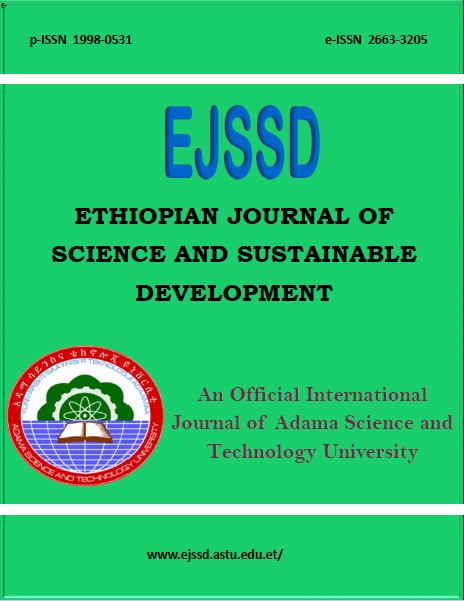Host-Parasite-Environment Interactions on the Infestation of Argulus africanus Thiele, 1900 on Nile tilapia in Lake Hawassa, Ethiopia
Abstract
Argulus is one of the economically important ectoparasite of Nile tilapia (Oreochromis niloticus L. 1758); however, it poses a serious problem both in culture and capture fisheries globally. This investigation was done, from May 2022 to January 2023, to evaluate the infestations and effects of Argulus africanus on Oreochromis niloticus, in Lake Hawassa, Ethiopia. A total of 270 Nile tilapia were taken from the fish landing site of the lake. Distinctive body shape and morphological features were used to identify A. africanus. To evaluate the parasite effects, prevalence, mean intensity, mean abundance and infestation index were determined. The infestation was highest and lowest in January and August, with a prevalence of 56.67 and 26.67% and an abundance of 1.0 and 0.3, respectively. However, the intensity was highest and lowest in July and September, with values of 1.82 and 1.08, respectively. Higher prevalence of Argulus was found in dry season than the wet season. Considering the part of the body infected, just over half of A. africanus was detected from gills. The size of O. niloticus and the presence of A. africanus were positively correlated. The water quality parameters showed statistically significant differences in temperature and nitrite among the study months; however, ammonia and nitrate showed insignificant difference. In conclusion, A. africanus infestations significantly impact O. niloticus depending on body size, season and physicochemical parameters. It is suggested to monitor the discharges of any organic and inorganic wastes into the lake.
Copyright (c) 2025 Ethiopian Journal of Science and Sustainable Development

This work is licensed under a Creative Commons Attribution 4.0 International License.

 Open Access
Open Access Print and Online ISSN
Print and Online ISSN Submit Your High-Quality Articles
Submit Your High-Quality Articles Higher Impact With Wider Visibility
Higher Impact With Wider Visibility Double Blinded Review Process
Double Blinded Review Process Join as Reviewer
Join as Reviewer